Bur Oak

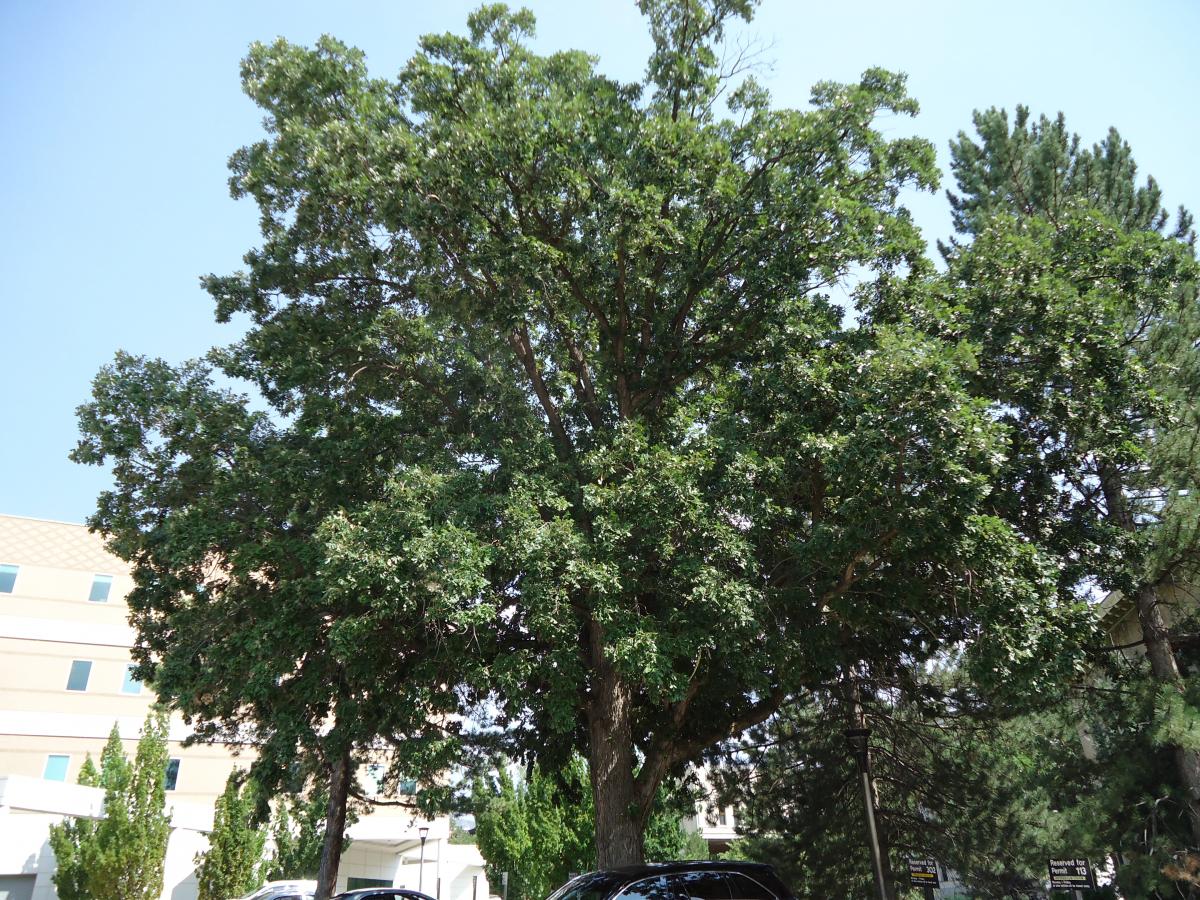

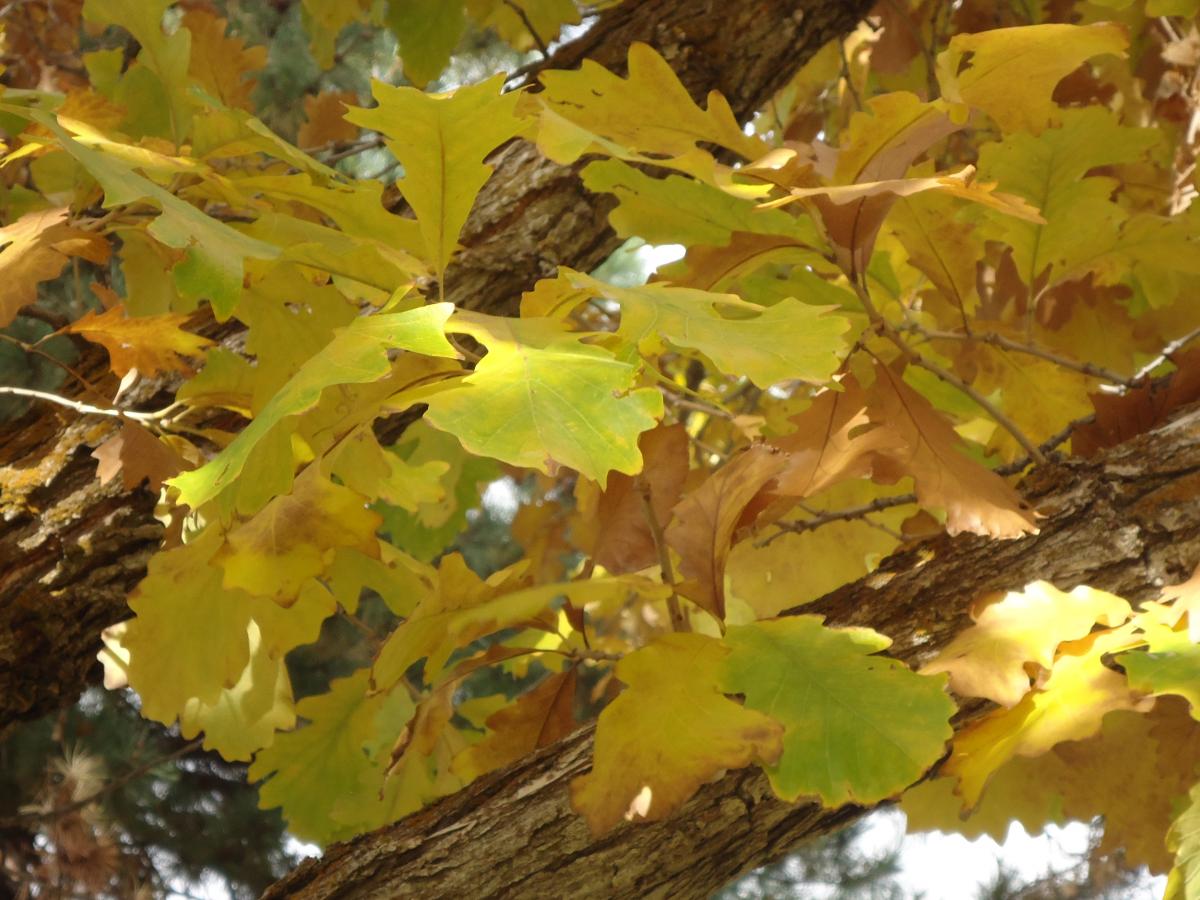
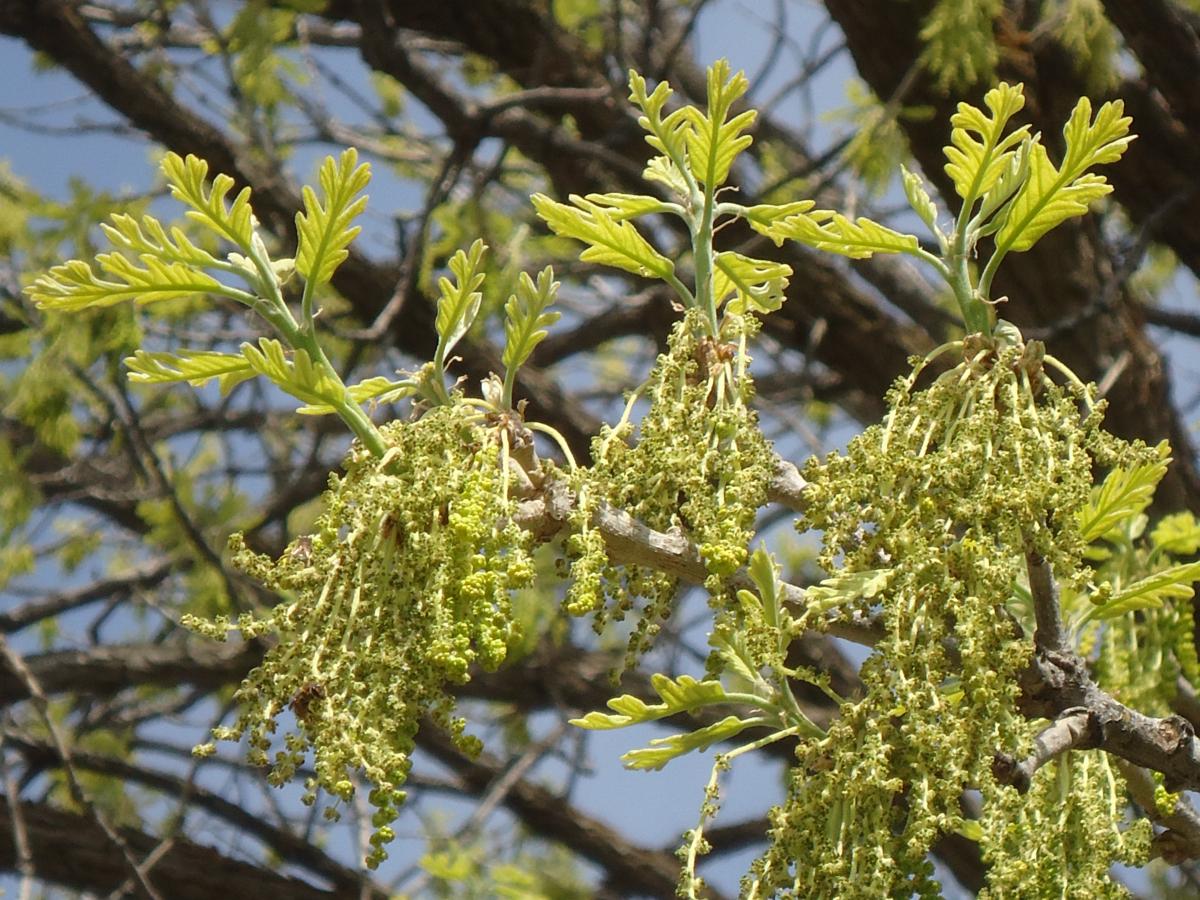
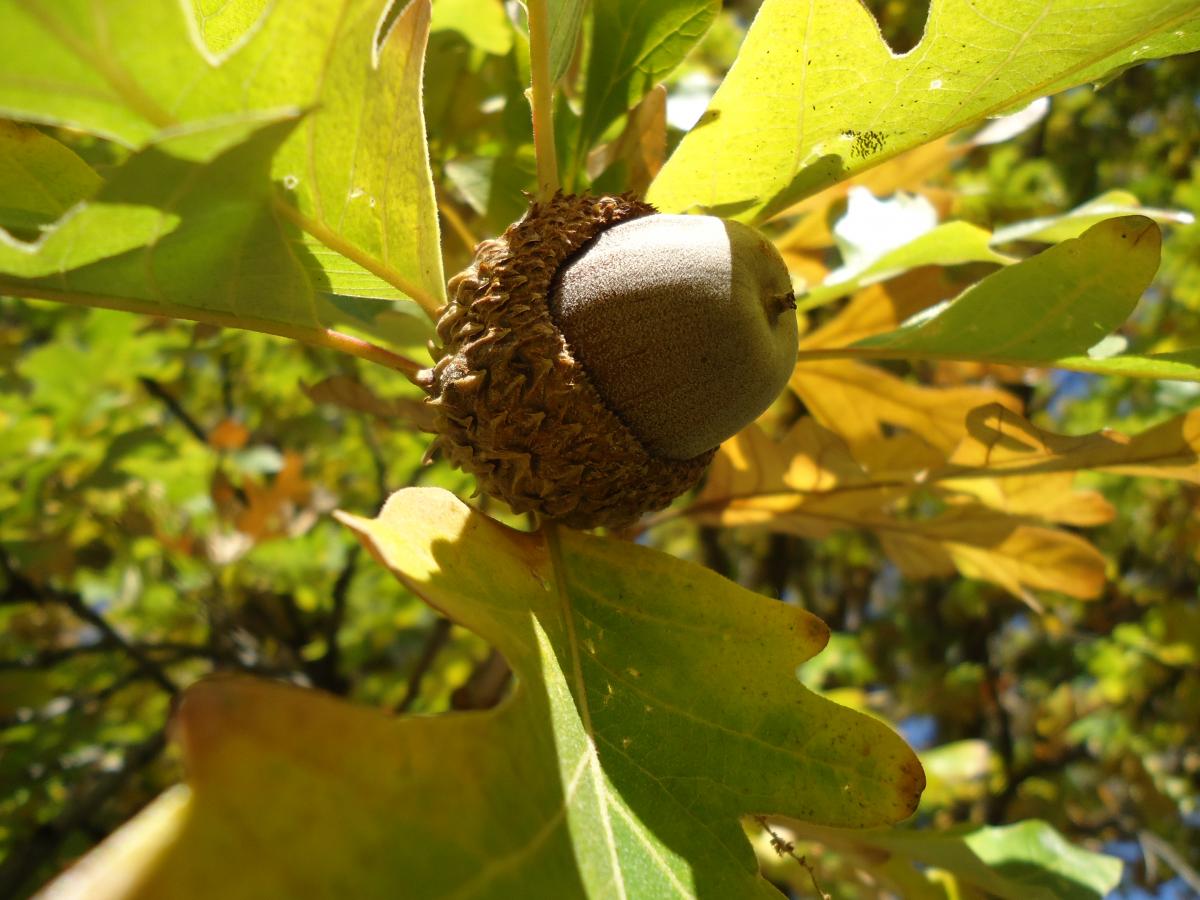

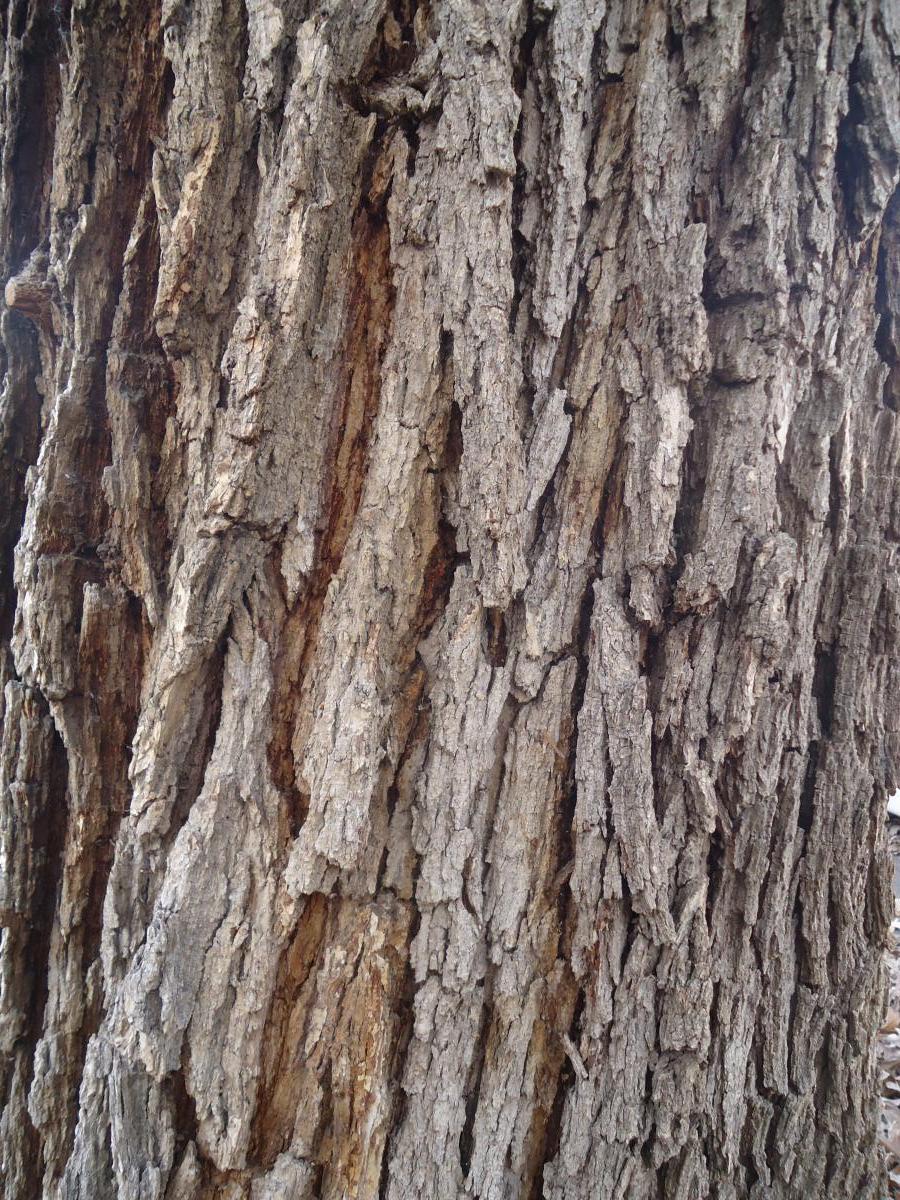
Quercus macrocarpa
Leaves: Deciduous. Leaves are 4 to 10 inches long about 3 to 5 inches wide. They have 5 to 9 rounded deep lobes and are extremely variable in shape. Divisions between lobes often come within ¼ inch of the center of the leaf or midvein. Leaves are much broader towards their point. Dark green in color with lighter underside. Leaves turn brown in fall, sometimes dull yellow.
Bark/Twigs: Thick, dark gray to gray-brown bark. Bark has a very rough texture and develops deep ridges and furrows even on younger branches. After the first year, stems develop corky ridges.
Flowers/Fruit: Inconspicuous, yellow-green or brown flowers form in thin, hanging clusters. Flowers in late spring as leaves emerge. Acorns are 1 to 1½ inch long and round. Acorn cap is fringed and surrounds ½ or more of acorn.
Mature size and shape: Large. 60 to 80 feet high with an equal or slightly greater spread. Spreading and rounded shape with a thick, sturdy trunk when older. Somewhat oval or pyramidal when young.
General information/special features: Plant in full sun. Adapts to a variety of conditions and soil types including clay. Drought tolerant due to extensive root system. Lives a long time.
Landscape use and maintenance: Good large shade tree for open areas. Too large for most residences. Slow growing rate. Average maintenance. Few insect or disease problems. Difficult to transplant.
USDA Hardiness Zone: 3 to 8
Family/Origin: Fagaceae - Beech and Oak. Native from the Great Plains east throughout the Midwest and Lake States.
Campus Use: Common. Large specimens can be found south of Sill Center (Bld 51) and north of Tanner Irish Humanities (Bld 45).
